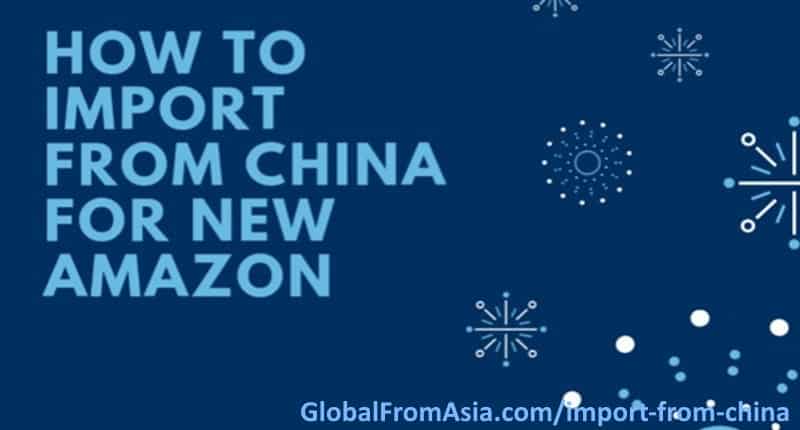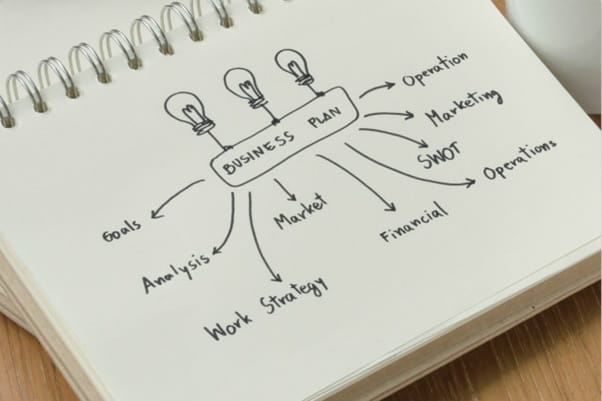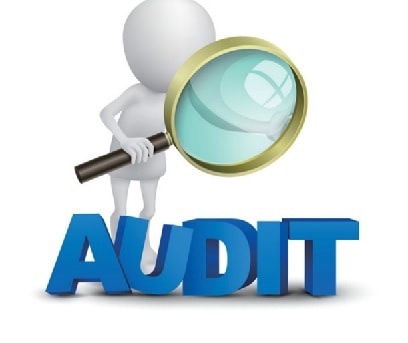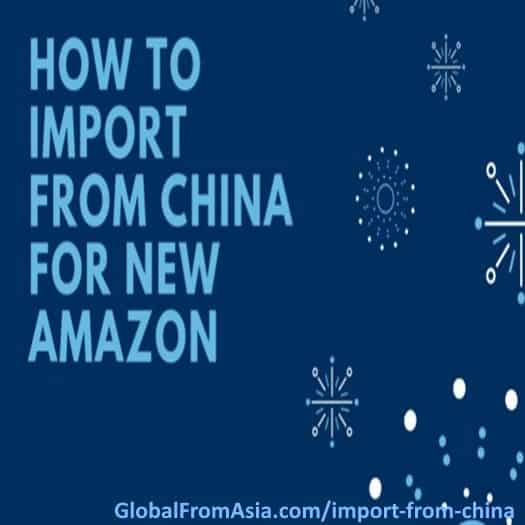
Thinking of starting up your own business on Amazon? It’s truly not a bad idea, seeing as Amazon is one of the world’s top giants in internet sales. With all of Amazon’s incredible web development and advanced online marketing tools, it has never been simpler to use the platform to make a success of your business. To date, Amazon has already helped thousands of people just like you, do just that.
The most difficult part in all this will really be about you finding your right niche, supplier and lastly, of course, the shipping.
Perhaps at this point you may be feeling a little overwhelmed and not quite sure where to start?
Well, relax. We’ve got you covered. You are in the right place.
Make a cup of tea, take a comfy seat and let’s dive right in to take a closer look at the whole skinny. Step-by-step.
Got your pen and paper handy?
Great, let’s start!

How To Choose Your Perfect Product?
This in essence, the first step has to be the hardest part to everything that needs to be done to start up your own business. Lucky for us, China is the perfect place to source anything your heart could desire. From Clothing, shoes, handbags, electronics and even stationery. Having all these choices could be a little like being a kid in a candy store. Your eyes will want everything, yet the best way will be to choose one product to begin with and find your niche. This may sound impossible, yet we have some techniques handy that will help you in making this difficult choice.
You will need to ask yourself a few questions before deciding on the final product. Take a look at these points and jot down the ideas that come to mind. Remember, this is only the first draft, what you choose now could change at any time. Allow yourself the freedom to play with your ideas and not put pressure on yourself to make your final choice right away.
Ask yourself these questions – ‘Is my product…’
1. Marketable
The key to your successful business is to be very sure that your product is accessible to your target market.
2. Profitable
We all have bills to pay and lives to live, so it is pretty important to make sure that your products are making you a decent amount of profit. This will ensure your financial safety and peace of mind. However, also to keep in mind is that a business takes time to build and in the beginning keeping your pricing within a reasonable range will help build you up faster. Being a start-up, don’t expect to retire and live in the Bahamas just yet. It may take some time.
3. Sellable
With different trading laws in various countries, it is essential to check the laws in your country to see if you are allowed to sell your chosen product.
4. Counterfeit or Copyright-related
I guess it goes without saying that counterfeit and copyright related products are a no-go-zone. Dealing with these products could have some serious consequences. Staying clear of them will help keep you far from trouble and any lawsuits that could arise in the future.
5. Low Risk and Small Sized
Ah now this is something that will help you to no end. Look for products that are guaranteed and smallish in size. Doing this will help you manage a possible loss on your investment and save you money on the shipping.
6. Niche, Niche, Niche
For start-ups it is especially insanely important to know your niche inside and out. Research it as much as you can and get all the information possible to have a very well rounded understanding. This will help you inspect the quality of your products further down the line in your business start-up. Trust us. This step could make you a lot of money in the future.

So now, all this talk of niche, and I bet you may be freaking out a little. No worries, it is not all brain surgery here – Just a few well trodden steps by many before you, that can also get you into the game.
Got that pen and paper handy still? This is where it will be much needed. Jot EVERYTHING down. And I mean everything. It may not make much sense to you right now, but sometimes what seems like a small inconsequential idea that you had six months ago, could be just what you need to put the cherry on top of the cake.
Ready?
The 5 Step Plan to Finding and Owning Your Niche
1. Brainstorm
Find yourself a quiet spot where you can really take the time to allow your mind to run wild. Write down all of your thoughts. Which niches look good to you? What do you see yourself selling? Who would be the people you want to serve and help on a daily basis? Write all these things down.
A few things you can ask yourself in the process of your brainstorming sessions – You don’t have to limit yourself to only one…
What is your motivation for wanting to start up your own Amazon store?
What challenges do you run into in your daily life where you ‘wished you had a certain thing you could not find’?
Which type of businesses do you loyally support and admire? Taking notes out of their book could help you establish a business with all the things that make a solid great business.
Keep these ideas on your paper; keep expanding on them as the thoughts come to you. They can prove to be very valuable in the process of your start-up as you build your plan.
2. Market Research
After coming up with an idea that you really like, it will be time to check it out thoroughly to see if it could be viable for you. The best way to find out all you can about your niche is to go online and look through relevant websites to find out more about the trends and what is current with those products.
The best way to do this is to identify what will boost your business. Professional websites like B2B websites will be a great place to start to see what is trending at the moment.
Amazon Best Seller,is a great place to find out what may be missing in the market. Look around and see if your choice of product is being imported or not. This will give you a good idea of what you can expect. Amazon’s Movers & Shakers is something that will really help you while you are doing your investigation. Remember to jot these ideas down along side your brainstorm page.
Google Trends,is another magic site that will show you without too much hassle if your product is trending and its popularity. It tracks time, regions and search terms used by customers. This could help you fill a gap in the market and in the long run, build your business even faster with higher reward.
Trend Hunter, Check out Trend Hunter as this will also assist in learning more about your trending market.
3. Market evaluation
Now that you have a pretty clear idea of what it is that you want to sell and know for sure how they are trending and selling online, it is time to analyze all the information in front of you. This is where you can roughly estimate how your sales will look should you go with your product.
It will be easy to tell, just look at how quickly the items are moving and at what price. Think a bit about where you want to position your pricing as this will play a large role in how your sales take off.
4. Product Related Regulations
As in life, there are rules we need to play by. This is no exception when it comes to selling your goods. Easiest place to start will be with the Amazon FBA Regulations. Take a good look at what they entail and what you need to do.
You will also need to know what your target market access regulations, quality compliance
and trade tariffs will be. Don’t brush over this step as this step is a giant step in making sure that your plans run smoothly in all your future sales and starting up your business. It will help you with the quality control process that we will talk about a little later on.
5. Business Plan
The words ‘Business Plan’ could sometimes strike a chord of panic in someone, yet with all you have done up until this point, it will be the easiest thing you have about ever done.
A good business plan will include your goals, market research information, and the resources that you have. This in essence will create the best business plan that you can put together.

Find the right supplier
Right! Now we have come to the juicy part of starting up your business. This could truly be the most incredible part of your journey that sets you up for greatness, or the worst nightmare that you could ever possibly imagine.
This is most important as your supplier is the backbone to your business.
You will need to do all the necessary checks, double checks and triple checks to be as safe as you can be. After all, this is your investment and it needs to be treated like a baby in arms.
Your supplier must be reliable and qualified. It is really just that simple. Making sure of these things will ensure that your products are of a high quality standard and that they will get to you when you expect them to, without any hassles.
I guess you are wondering how to make this happen? Well, it really is a simple task when you know what to look for and how to prepare. The right questions and knowledge of how to go about this are what takes out the fear and makes it rather exciting. Let’s take a look at the different ways you can go about finding your dream supplier in China and what you need to do to make this happen.
1. B2B platforms
Never underestimate the power of the B2B platforms. These platforms are dynamic tools that can help you so much in the long run. They can save you time and a lot of stress. These platforms host a huge number of suppliers that can tailor to your needs. The best part is that you can find anything your heart desires and then some. Yes, you read right. These B2B platforms take shopping online to the next level. Just remember to stick to your original plan of your chosen product, as checking out these sites can truly feel like being a kid in a candy store. Take your time in searching.
Remember unit price, shipping and quality are the main concerns while browsing these sites.
Alibaba, is one of the most popular and comprehensive sourcing platforms today. It covers over 240 countries worldwide with as many suppliers as you could ever wish for. Almost every product that you could think of, will be on Alibaba. Usually the unit pricing is rather low if you buy more than the MOQ (Minimum Order Quantity) that the supplier has per shipment/order.
With so many suppliers the best way to find the right one for you, is to compare your chosen few on the supplier page on the platform. This page will show their reviews, MOQ pricing. You can then verify the suppliers’ background. This will include their business license, company/factory location, ownership status, contact information and certifications.
Dhgate and AliExpress are smaller B2B platforms that you can also use. The only difference is that these two require a smaller MOQ than Alibaba. This may be a good option should you only want to order a small amount of goods to test your market. Yet the unit price may be considerably higher than what you would find on Alibaba.
2. Trade Shows
Trade shows are a wonderful way to check out in real time what is happening over in China. After doing your research online and reaching out to possible suppliers, going over to meet them in person and establishing a report, will only help you to know who you are dealing with and establish a business bond. China is known for their outstanding trade shows that run frequently during the course of the year.
You can check out information on all the planned shows on Trade Fairs. This will help you plan your trip and make contact with possible suppliers who could help you.
Another way would be to schedule a visit for the Chinese Canton Show and the Hong Kong Trade Show.
3. Sourcing Agent
Now let’s say you are already familiar with China and feel comfortable with how things work, you can always hire someone to do the work for you. A sourcing agent in many cases is such a relief and can save you a lot of time as well as a ton in expenses from travelling over.
A professional sourcing agent can offer you a number of things. From supplier selection, to product inspection, to shipping and even the customs clearance. In short, having a professional who is in the country with their ear to the ground can only help boost your business. They may perhaps know who the real trustworthy suppliers are and can point you in the right direction instead of going in blind.
The best way to find a specialized agent will be to look for a certified agent who has been approved by the Chinese government. We can highly recommend Leelinesourcing, as they have over a decade of expertise in the field.
After doing your homework and sourcing your chosen suppliers, how will you know which ones to contact or not?
Here we have a list of what to look for in order to make the right choice.
- A physical factory inspection is necessary. This will help you check that the quality and safety regulations are met with the products the supplier produces. You can go yourself or send a professional inspector in your stead. This is to check the authenticity of the supplier, their business certificate, quality certificate and business scale.
- If you feel that you have found your ideal supplier, you can then order your first sample run. For this to happen, you will need to discuss your specifications with your supplier. Your product requirements, raw material requirements and processing requirements must be communicated clearly and in detail. This will avoid any confusion and incorrect specifications being relayed. Remember to be in frequent contact with your supplier so that you can track the progress of your order.
- Once your chosen supplier has finished the first sample run, and you have received them; it will be your responsibility to have them tested for quality and safety regulations in a lab of your choice. This is to pass your product in your own country so that you can sell them to your target market.
- When you are happy with the results from the lab, you can place your first order with your supplier. Make sure that all your correspondence is in writing to cover all bases. Your requirements need to be communicated and mapped out clearly to avoid confusion.

When all is said and done, it really boils down to the quality of your product. A good quality product is one that will keep your customers happy and keep growing your business.
Quality control or QC is a very important step in the making of your product. This process is to make sure that what you are making and selling is in line with laws and regulations. As each country has its own laws with regards to this, it is imperative to make sure that this process runs smoothly and that steps are not missed.
You can oversee this process yourself or employ a professional certified inspector in China to do it for you.
As we all know fake and copycat products are very common in China, so it is very important to have your products checked before you sign on the dotted line. To make it easier let’s take a look at the steps that need to take place in the quality control process.
- Pre-production
You will need to inspect the quality of the raw materials before production begins to make sure the right materials are going to be used in your products. - Production Process
During the course of your production run, it will be necessary to inspect the factory to make sure that all is in line with the laws and safety regulations with regards to your product and how it is being made. This step is also to check that the production schedule is on track with the shipping date. - Final Inspection
This is the most exciting step. After all, your planning and proper checks, your final product has been made and is ready for the final checking stage. This is where you will inspect your product and ensure that the quality is of a high standard. In doing this, you will be able to detect any quality problems before the products are shipped to you.
Find Your Perfect Freight Forwarder
As with any order you make, shipping times are always taken into account. Having said this, you will need to choose the right freight forwarder to make sure that your shipping times and product safety is in good hands.
How then do you find your perfect freight forwarder? Let’s take a look.
1. You will have to do your homework, and analyze your shipping needs and required times. Take a look at the specific services of your business and the volumes that you need. After doing this, make a checklist of all your requirements.
2. Check the industry experience of your freight forwarder. Be sure to ask about their network of agents and business partners. This will help you establish if they can be trusted.
3. Look at the risk management portfolio. Normally a popular freight forwarder will be able to mitigate risks during the transportation process and will know how to deal with possible risks that could occur. Be sure to check if they offer cargo insurance on your products.
4. A good freight forwarder will offer a full array of transportation services like air, sea, road transportation, and logistics solutions. You can discuss with your potential forwarder about your transportation requirements and they will assist you in choosing the right method for you.
5. Double check the customer service of your freight forwarder. Customer service is very important. You will need timely notifications during the transportation process. They should also offer all your account information online and be able to track and trace where your shipment is at all times. This will include personal calls, emails, and text messages.
6. Be sure to check licenses, permits, and other required documents of your chosen logistics provider. You will have to check that they are legitimate. These licenses and permits will ensure that they are safe to use.

Soaking up all this information has probably boggled your mind.
No matter, take your time. Read it again, and again for reference. When you feel comfortable with all the steps and feel ready to move forward with your idea; your business can only excel with the right knowledge and actions.
We hope this article has been helpful and we wish you all the luck in starting up a business that could change your life forever.

